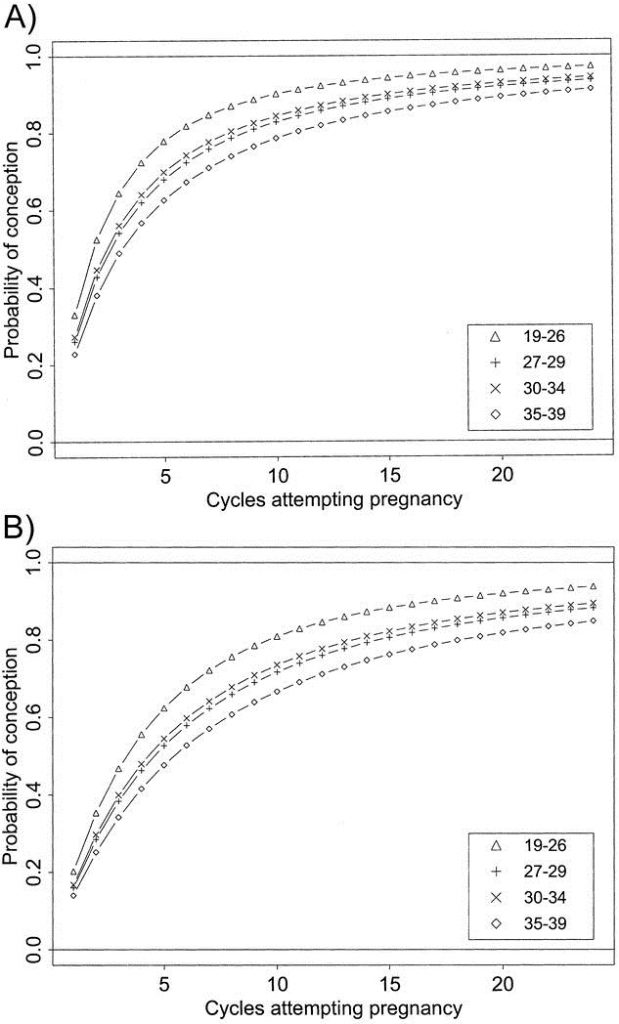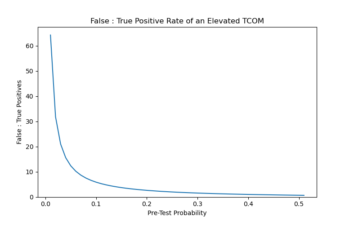The Real Data on Maternal Age & Fertility
Part 2 took a critical look at maternal age and fertility as discussed in The Atlantic. I found it misleading – it ignored the great difficulty faced by those who are infertile and the rise of birth complications as the mother ages. I said, broadly, that fertility drops gradually as would-be parents age from 30 to 40 such that waiting beyond the mid-30s was a calculated risk.
I left out some of the detail, in particular, the “data” cited by Ms Twenge in that article. Here, I’ll explore the data and tell the (brief) story of the science of fertility.
Fertility & Maternal Age: The Science
As Ms Twenge complains, data on this subject are hard to get. No surprise – not many couples are excited about have their sex lives randomized to laboratory conditions, much less couples who have little time to waste. As such, we have no perfect picture of fertility – just little snapshots, all of them imperfect in their way, that we try to cobble together.
The French Connection
As Ms Twenge correctly notes, one of the first canonical studies on maternal age comes from large French families in 1670-1830 (reviewed by Leridon). The idea was to get a big sample and ask at what age women stopped having babies. They found found lots of babies <35, very few >40 and, thus, a steep decline from lots to very few from 35 to 40.
Ms Twenge is shocked, shocked that these data are old & French, but really, what’s wrong with that? Fundamental human biology takes millions, not hundreds, of years to change.
And it’s not like those data were chosen arbitrarily. They represent an era before contraception muddled the statistical picture. That is, any similar study today would not reflect humans’ “natural”, inherent fertility at all. One could even argue those Imperial-French women might well be more fertile than their modern sisters whose ovaries are exposed to more radiation and novel chemicals.
Tired Men?
Of course, there is one glaring problem with those French data. Are there fewer babies after 35 because the women’s eggs dry up or because the men just aren’t into it anymore? It’s a legit concern, even for famously timeless French women, especially in age where women often married in their teens.
A solution came from another French group in 1992. They took men out of the equation by studying the effect of maternal age on the success of artificial insemination. They found the “decrease [in] conception rate per cycle…is slight but significant after 30 years of age and marked after 35 years”. Insemination worked 74% of the time in women <31, 61% in women 31-35, and 54% in women over 40.
For whatever reason – could be issues with frozen sperm, selection bias of woman coming for treatment – these data are at the pessimistic end of the range.
The Cutting Edge
A few recent studies, some cited by Ms Twenge, are more optimisitic.
David Dunson and colleagues looked at data from about 800 European women enrolled in a study of rhythm method of contraception. They selected out any couple with a history of infertility, so this is already a sort of best-case-scenario for fertility. They looked, effectively, at the chance of getting pregnant on the first try. 54% of women 19-26, 40% of women 27-34 and 30% of women 35-39 got pregnant right away.
Of course, not many couples trying to have a baby give up after the first try, so Prof Dunson followed up in 2004 to give more useful data. Consistent with our previous discussion, his team found 80-85% of 19-26 year-olds could get pregnant within a year of trying. 27-34 year-olds managed only a little worse at 75-80%. 65-75% of 35-39 year-olds got a baby.

Based on the study design and analysis, I think these are the most useful data in the field. Ms Twenge cites this paper as well, but it is unclear to me where she’s getting the numbers she reports.
Finally, Ms Twenge cites the Rothman paper on Danish women where the the main trouble is obvious – over half the women studied had already had a baby. They filtered out half their sterile couples. Thus, a 35 year-old woman who”s never had a baby has a much lower expectation of fertility than Ms Twenge reports.
What About the Boys?
It’s definitely worth noting that most of the studies above observed small but significant declines with age in MALE fertility as well. That is, a 35 year-old woman with a 40 year-old partner faces tougher odds than her twin sister dating a 25 year-old.
In Conclusion
I think it”s wonderful that she was able to start a family after turning 35, but as a researcher, she surely knows that an example does not prove the rule. As I’ve tried to show, her tagline, “Here’s what the statistics really tell us—and what they don’t”, implies a curious understanding of statistics.
It is certainly true that many women can conceive easily and with few complications well past 35, but that does not change the fact that, on average, fertility slowly but surely declines through a woman’s (and a man’s) 30s. To assume other women will be so lucky, just because she was, is frankly reckless. The OB-Gyn doctors she scolds surely have seen many such cases and know the numbers; they are just trying to help her manage some very real risks.
* Note: This was originally posted Jul 2013 from San Francisco and is now reposted after a technical upgrade in Oct 2017.


1 thought on “Age & Fertility Furore, Part 2”
Comments are closed.